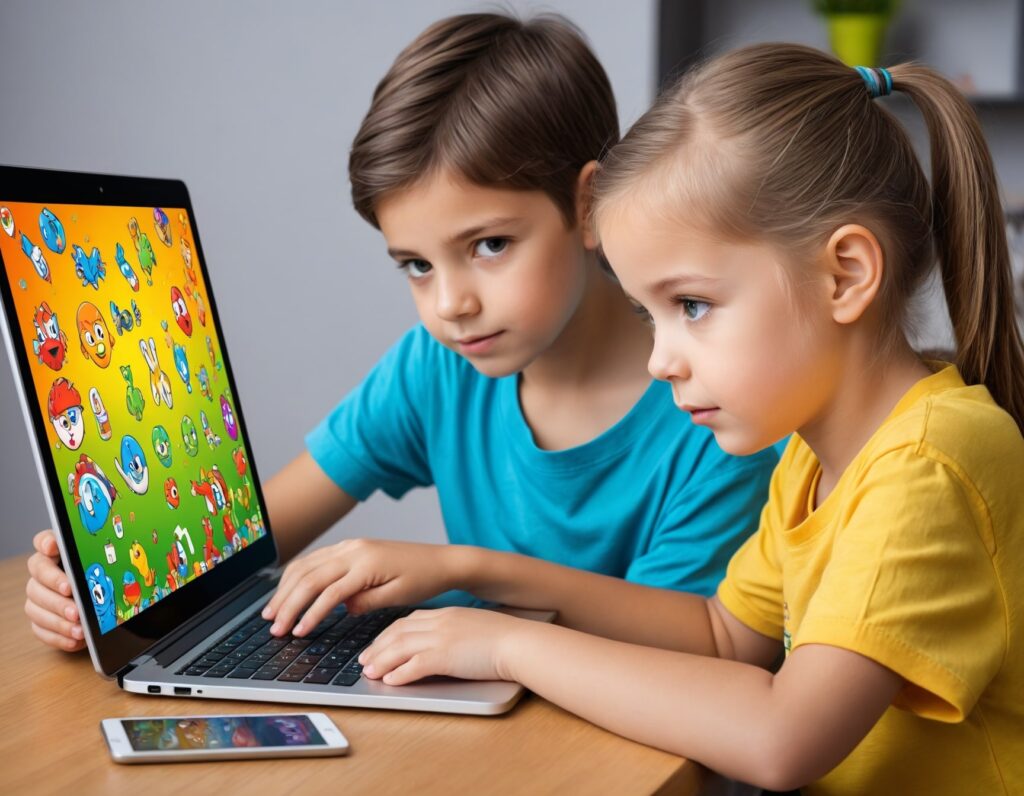
In today’s digital age, screens are everywhere—tablets, smartphones, TVs, and computers. While technology offers incredible learning opportunities, it also raises important questions for parents: How much screen time is too much? And how can we ensure it benefits our kids without harming their development?
At Specialist en Kids, we’re here to guide you through this modern parenting challenge. Here are some tips to strike the right balance:
1. Understand the Guidelines
The American Academy of Pediatrics (AAP) recommends:
- Under 18 months: Avoid screen time (except video calls with family).
- 18–24 months: Introduce high-quality educational content, but watch it together.
- 2–5 years: Limit screen time to 1 hour per day of high-quality programming.
- 6+ years: Set consistent limits and ensure screen time doesn’t replace sleep, physical activity, or family time.
2. Choose Quality Over Quantity
Not all screen time is created equal. Focus on:
- Educational apps and games that promote problem-solving, creativity, and learning.
- Age-appropriate content that aligns with your child’s interests and developmental stage.
- Interactive activities rather than passive watching.
3. Create Screen-Free Zones and Times
Establish boundaries to ensure screens don’t take over your child’s day:
- No screens during meals or family time.
- Screen-free bedrooms to promote better sleep.
- Outdoor play and physical activities to balance sedentary screen time.
4. Be a Role Model
Kids learn by watching us. Practice healthy screen habits yourself:
- Put your phone down during family time.
- Engage in offline activities like reading, crafting, or playing together.
5. Use Technology as a Tool, Not a Babysitter
While screens can be a lifesaver during busy moments, they shouldn’t replace human interaction. Use technology to:
- Enhance learning (e.g., virtual museum tours, coding games).
- Stay connected (e.g., video calls with grandparents).
- Encourage creativity (e.g., digital art or storytelling apps).
6. Monitor and Adjust
Every child is different. Pay attention to how screen time affects your child’s mood, behavior, and development. If you notice issues like irritability, sleep problems, or a lack of interest in offline activities, it might be time to reassess.
Conclusion:
Technology is here to stay, and when used wisely, it can be a powerful tool for learning and growth. At Specialist en Kids, we believe in empowering parents with the knowledge and resources to make informed decisions about screen time.
What’s your approach to screen time? Share your thoughts and tips in the comments below!
Call to Action:
📌 Follow us for more tips on parenting, child development, and trending topics!
📌 Subscribe to our newsletter to get expert advice delivered straight to your inbox.
📌 Share this post with other parents who might find it helpful!

Hi I want more info about this